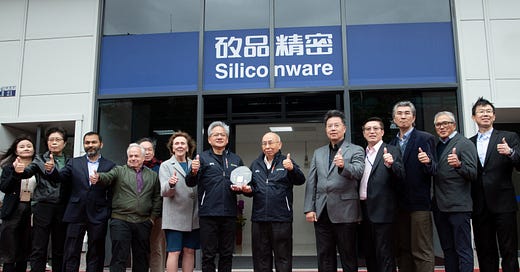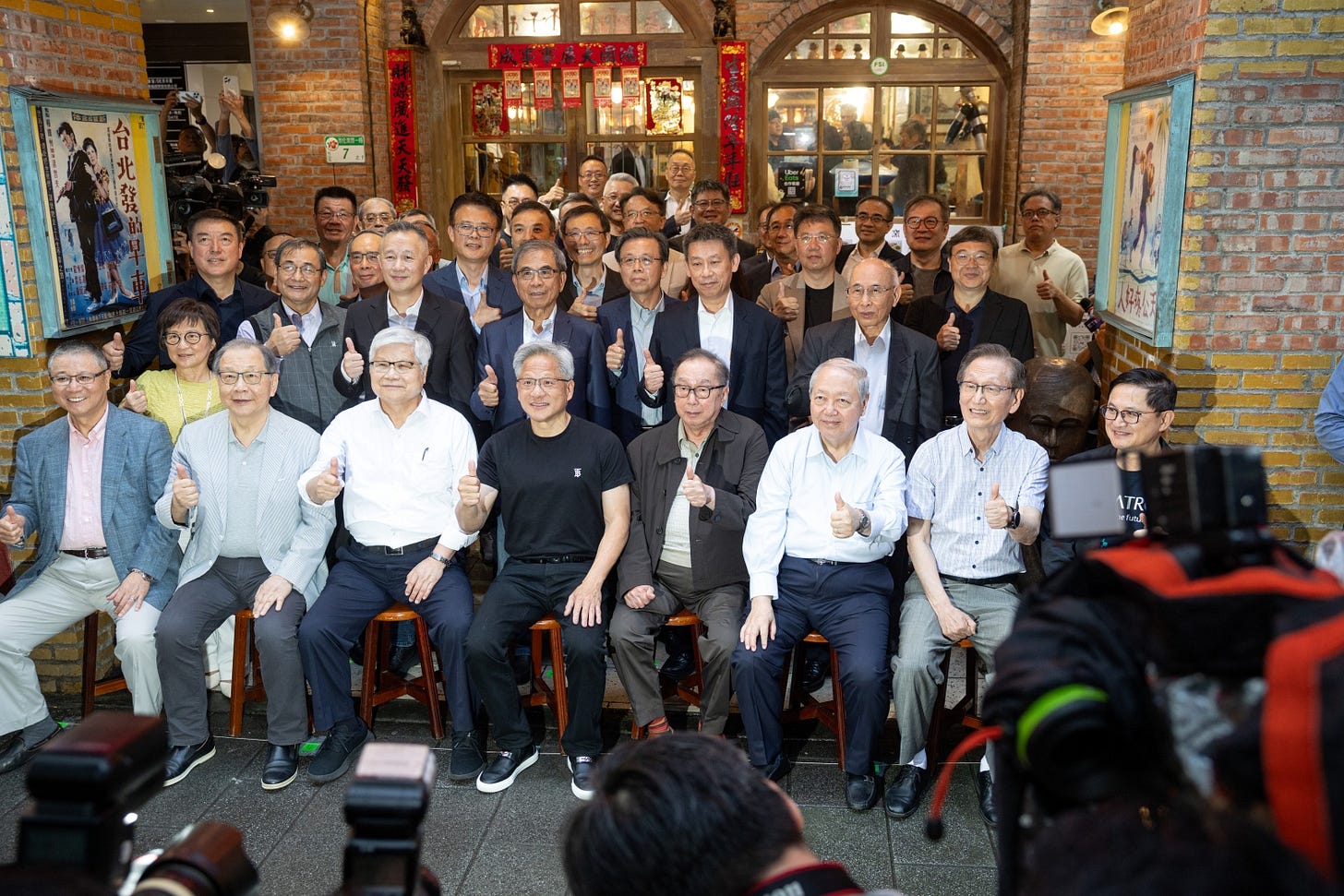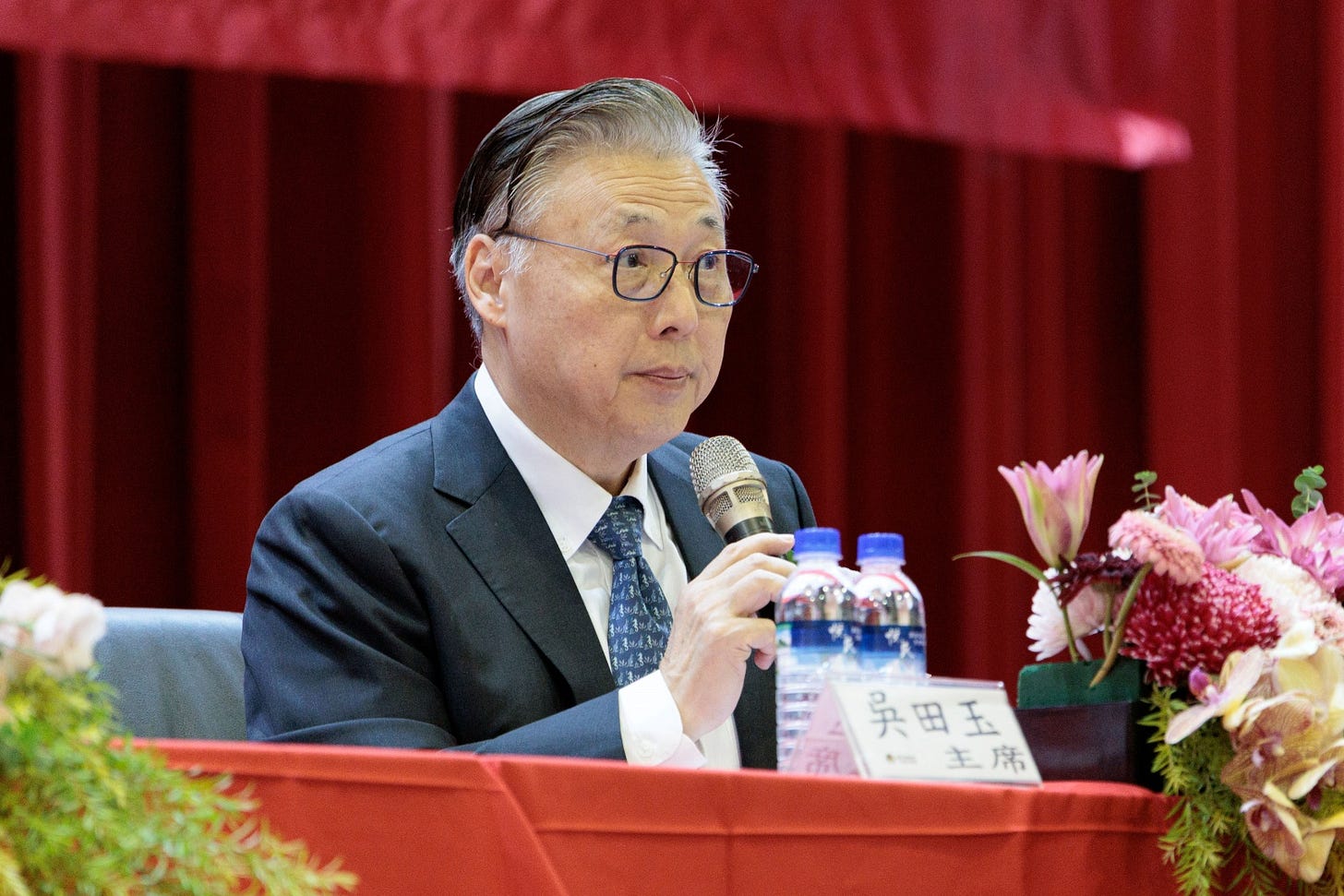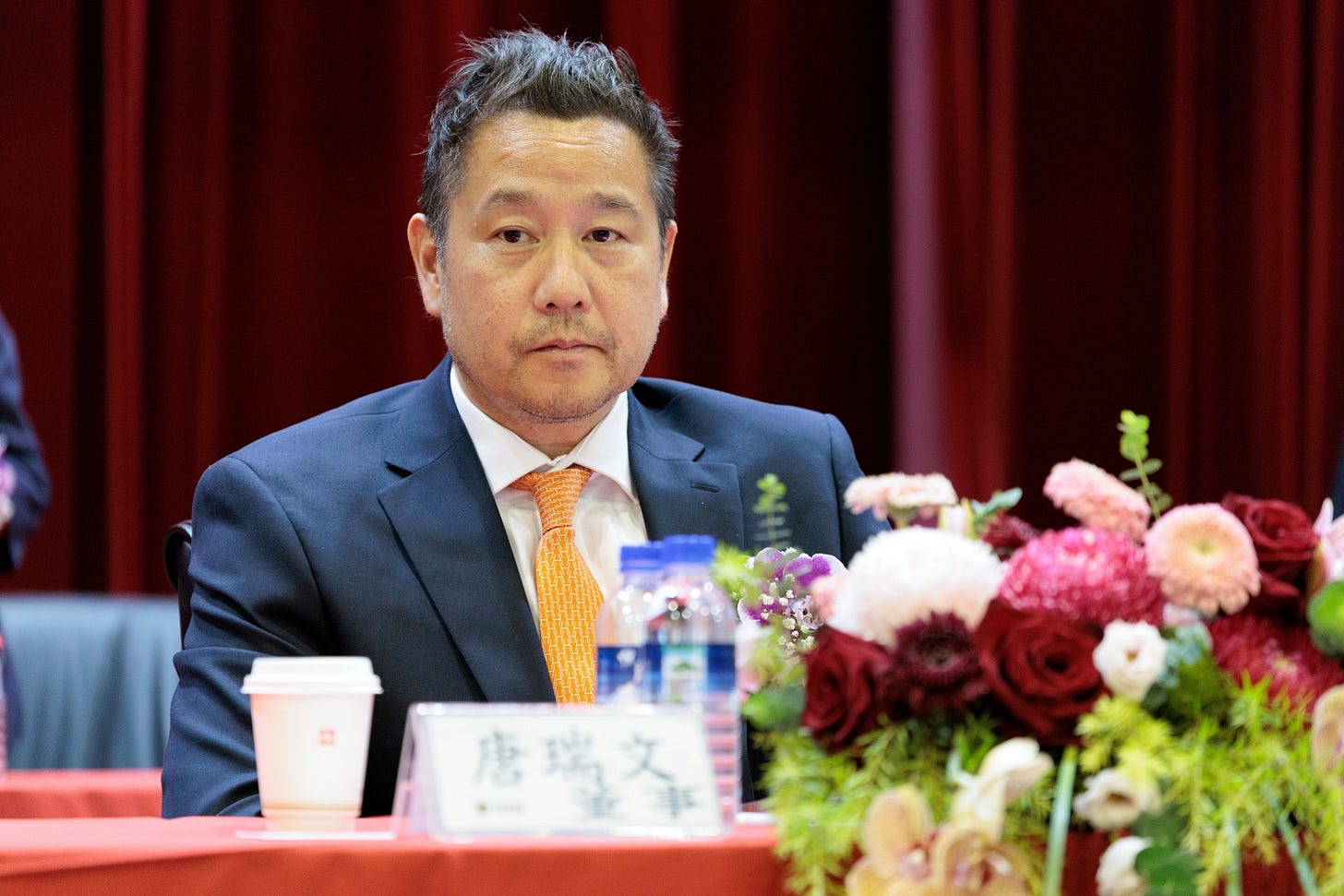The Court Document That Shook CoWoS: Why ASE Was Left Off the Billion-Dollar Table
Liang-rong Chen
Hi everyone,
I recently caught up on Netflix’s hit series Mad Unicorn (perhaps a bit late to the party)—a show based on the true entrepreneurial journey of Komsan Lee, founder of Flash Express, Thailand’s first unicorn.
What struck me most about this Thai original series was its unmistakable admiration for, and eagerness to learn from, “advanced China.”
Flash Express was founded in 2017, when Thailand’s GDP per capita stood at $6,413 compared to China’s $8,817—a gap not as stark as the series implies. Yet the narrative leans heavily into China’s influence.
The protagonist, a Chinese-Thai entrepreneur from a rural background, describes his greatest advantage as “being able to speak Chinese.” His startup idea came to him during a trip to Shanghai, where he was blown away by China’s hyper-efficient and low-cost delivery infrastructure. That experience became the blueprint for his business in Thailand. From his lead investor to his CTO—and even the tech partner of his fiercest competitor—every road pointed back to China’s logistics ecosystem.
Swap “China” for “the U.S.” and “Shanghai” for “Silicon Valley,” and Mad Unicorn could easily pass for a startup origin story from Taiwan, South Korea, or even Japan.
It’s a reminder that the idea of “one world, two systems”—so often framed in terms of U.S.-China decoupling and supply chains—also applies to the realm of digital services.
Advanced Chinese technologies in mobile apps, logistics, and payments are already dominating many Southeast Asian markets, reshaping what was once a “Chinese cultural sphere of influence” into a full-fledged “Chinese tech sphere.”
And with AI applications exploding globally, Southeast Asia may well become the next frontier for China’s AI exports. It’s a trend I’ll be watching closely.
Now, back to this week’s issue.
ASE Technology Holding(日月光投控), one of the world’s largest OSAT providers, just held its annual shareholders’ meeting. At a media lunch, COO Tien Wu(吳田玉) enthusiastically laid out the company’s strategy in AI and advanced packaging.
Meanwhile, I’ve been examining ASE from a different perspective—through a 100-page verdict issued by Taiwan’s High Court. It reveals a lesser-known story: how Taiwan’s third most valuable semiconductor company is navigating the shifting tides of the AI era.
Let’s dive in.
One of the biggest surprises in Taiwan’s semiconductor industry this year is TSMC’s meteoric rise in advanced packaging.
After Chairman C.C. Wei(魏哲家) pledged in multiple earnings calls that CoWoS capacity would “more than double” in 2024, the ambitious expansion now appears set to catapult TSMC past ASE Technology Holding to become the world’s largest outsourced semiconductor assembly and test (OSAT) provider.
Bernstein Securities projects TSMC’s backend revenue to hit $12 billion this year, surpassing ASE’s $11 billion.
Meanwhile, under relentless pressure from Nvidia, TSMC has finally decided to outsource all of the less complex “oS” (on Substrate) processes in the CoWoS backend.
The primary beneficiary of this strategic shift will be Siliconware Precision Industries (SPIL,矽品), an ASEH subsidiary based in Taichung. SPIL is set to become Nvidia’s exclusive oS packaging partner, handling an estimated 60% of TSMC’s CoWoS output.
That’s also why Nvidia CEO Jensen Huang’s(黃仁勳) private jet made a rare stop at Taichung International Airport earlier this year.
Huang was there to inaugurate SPIL’s new TTIP(潭子科技園區) facility, a plant widely considered the dedicated “oS” foundry for Nvidia’s AI GPUs.
TSMC has imposed stringent “copy exactly” requirements on the production lines within the facility, demanding identical equipment and manufacturing parameters to its own.
Industry insiders buzzed: the “AI godfather” himself unveiling a new facility in Taiwan for a supplier?
But the surprise didn’t stop there. None of ASE Holding’s top brass—including Chairman Jason Chang(張虔生), CEO Richard Chang(張忠本), COO Tien Wu, and CFO and Spokesperson Joseph Tung(董宏思)—were present.
Instead, the spotlight fell on SPIL Chairman C.W. Tsai(蔡祺文), who warmly interacted with Huang throughout the event.
Huang effusively praised Nvidia’s 20-year “revolutionary” relationship with SPIL, noting that Nvidia’s revenue contribution to SPIL had grown tenfold, and “last year alone, it doubled from the year before.” Notably, he never once mentioned ASE Technology Holding.
At the Billion-Dollar Banquet, ASE Was Nowhere to Be Seen
Fast forward to Computex in May. At Nvidia’s partner dinner held at the nostalgic Brick Kiln Restaurant(磚窯古早味懷舊餐廳), it was C.W. Tsai who stood alongside TSMC Chairman C.C. Wei and Quanta(廣達) Chairman Barry Lam(林百里) for a photo op with Huang, not ASE’s senior executives.
Tien Wu, often seen representing the semiconductor industry at high-profile events, found himself playfully ribbed by friends: “Why is SPIL always stealing the show at Jensen’s events?”
He could only offer a sheepish explanation: the holding company operates at a higher strategic level, so his presence at subsidiary events wasn’t necessary.
However, an ASE executive confided that Jensen Huang’s visit to SPIL never even included an invitation to ASE Technology Holding.
As someone who reported on the hard-fought ASE-SPIL merger nearly a decade ago, the reversal playing out today is nothing short of dramatic.
After months of fierce corporate sparring in what the localc media dubbed the “ASE-SPIL romance,” the saga ended with the creation of a holding company.
But with the new entity still bearing the ASE name—and top management drawn entirely from the original ASE Semiconductor ranks—one veteran industry insider summed it up bluntly:“Everyone knew SPIL had been acquired.”
Yet in a twist of fate, C.W. Tsai, once the fiercest opponent of the merger, is now, at 78, enjoying the most prominent chapter of his career.
A Court Verdict Reveals the Merger’s Secret Clause
It wasn’t until I reviewed the High Court Kaohsiung Branch Court’s verdict from late December, sentencing Tien Wu to one year and ten months in prison for insider trading, that the full picture emerged.
It turns out that during the merger, Jason Chang had promised to allow SPIL to “operate independently,” even granting them the right to select their own board members. That pledge turned out to be the key that ultimately made the merger possible.
At this point, readers might be wondering: why would a criminal court ruling reveal the inner workings of a corporate power struggle?
It was, in a way, an accidental disclosure. The information Tien Wu allegedly leaked to a “female acquaintance” was none other than the impending ASE-SPIL merger.
The crux of the legal battle—Wu was acquitted in the first trial but found guilty on appeal—centered on a key question: did the information he shared qualify as “material information” under Taiwan’s Securities and Exchange Act?
Wu’s defense argued that the deal had gone through multiple twists and near collapses. Given the uncertainty at the time, even if he had disclosed the merger talks, the information might not have been considered material in a legal sense.
As a result, the 100-plus-page court verdict meticulously documents these never-before-revealed “twists and turns,” all derived from the testimonies of ASE’s senior executives.
For instance, ASE’s former chief administrative officer, Dtuang Wang(汪渡村), testified that ASE initially assumed it would have full control over board appointments post-merger.
“But SPIL firmly rejected that idea,” he said. “After long negotiations, we landed on a compromise: ASE would retain formal appointment rights, but all candidates would be nominated by SPIL, and ASE would fully respect those choices.”
To formalize this arrangement, Clause 9 was added to the Share Swap Memorandum signed on May 20, 2016. It guaranteed SPIL’s operational autonomy:
“The newly established holding company... shall allow SPIL’s board to independently nominate future board members, to be formally appointed by the holding company. SPIL’s board shall continue to operate autonomously and retain authority over organizational structure, compensation, and employee benefits—ensuring the company can maintain its existing and future business operations independently after the share swap.”
Why Did ASE Grant SPIL So Much Autonomy?
According to a former SPIL executive, the turning point came in March 2016. That month, SPIL’s leadership team published a joint statement in the newspapers, pledging to stand with Chairman Bough Lin(林文伯).
“Jason Chang realized that even if he acquired the company, it would be meaningless if all the talent walked out the door,” the former executive said. In the end, Chang then agreed to Lin’s conditions of forming a holding company and independent operation, provided, of course, “that it could continue to be profitable.”
But how independent could SPIL really be?
Dtuang Wang recalled that SPIL fought for investment autonomy until the very last moment. “SPIL hoped to have investment freedom under certain conditions.”
But ASE Holding executives, including Joseph Tung, worried this would undermine the group’s broader investment strategy. “I proposed that SPIL bring any major investment plans to the Holding level for consensus,” Tung testified. “Only after alignment could they proceed. That way, we could maximize synergies... SPIL eventually agreed.”
The former SPIL executive stated that the final resolution was that SPIL could make capital investments each year up to the amount of its previous year’s depreciation. Anything beyond that required approval from the holding company.
With the advent of the AI era and its massive investment requirements, this clause has unexpectedly become critically important.
Now that SPIL is set to handle the entire oS segment of Nvidia’s AI GPU packaging, Jensen Huang has pushed for NT$200 billion (roughly US$6 billion) in capacity expansion.
However, when SPIL’s proposal reached the holding company, Jason Chang, concerned about a potential oversupply in AI, asked, “Will the demand still be there after the expansion?” He then slashed the budget in half, leaving only NT$100 billion.
How Jason Chang’s Decentralized Playbook Shaped ASE’s Three Power Centers
Back at the merger press conference, Jason Chang described the new ASE-SPIL relationship with a folksy analogy: “Like brothers climbing the same mountain on different paths.”
I assumed it was just something said for show, so I didn’t pay it much attention. But according to one ASE insider, it was actually a glimpse into Chang’s core management philosophy.
For years, ASE Semiconductor’s Kaohsiung and Zhongli facilities had operated under this very “striving independently” ethos. A former SPIL executive recalled a joint meeting where Kaohsiung GM Raymond Lo (羅瑞榮) and Zhongli GM Tien-ssu Chen(陳天賜) brought their teams together, but refused to sit near each other, barely exchanged words, and acted like oil and water.
A few years ago, when MediaTek’s(聯發科) orders at ASE’s Kaohsiung plant exceeded capacity, they hoped to divert some to the Zhongli plant, which had idle capacity. However, products from Zhongli repeatedly failed validation. MediaTek then sought assistance from the Kaohsiung plant.
“They flat-out refused,” said a MediaTek executive involved in the deal. “Even with Tien Wu mediating hard between both sides, he couldn’t get anywhere.” Kaohsiung feared that training Zhongli would only lead to lost business.
“They would rather I send the entire order to China than let a single IC go to Zhongli,” the executive said. “That’s how they’ve always been—it’s quite absurd.”
So SPIL’s “independent operation” didn’t feel out of place at all—it simply turned ASE Holding into a federation of three semi-autonomous packaging kingdoms across northern, central, and southern Taiwan.
But change may be coming. With the recent entry of the Chang family’s second generation onto the holding company’s board, preparing for succession, this fragmented landscape is beginning to shift.
The first sign of change came when Jason Chang personally stepped in to broker a compromise: in 2023, the three business units finally began integrating their procurement operations.
Under ASEH, they established a new centralized entity, ASE Global Integrated Solutions, to consolidate purchasing. The company is chaired by Chang’s son-in-law, Andrew Robert Tang(唐瑞文).
Tang also serves as a director of ASE Holding, chief procurement officer, and vice chairman of ASE Semiconductor.
Now, all eyes are on what this deeply family-run tech giant does next.
Read more here
The CoWoS A-Team: Taiwan’s Secret AI Superweapon
The Secret Behind TSMC’s CoWoS Packaging Technology
The Future of TSMC’s CoWoS: Hybrid Bonding and Microfluidic Cooling








